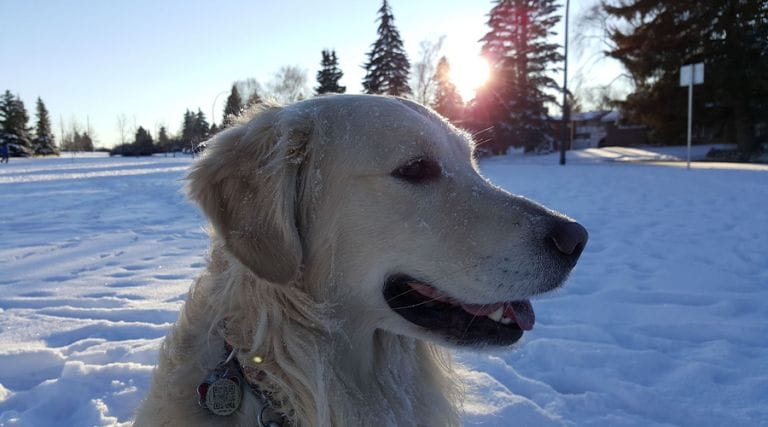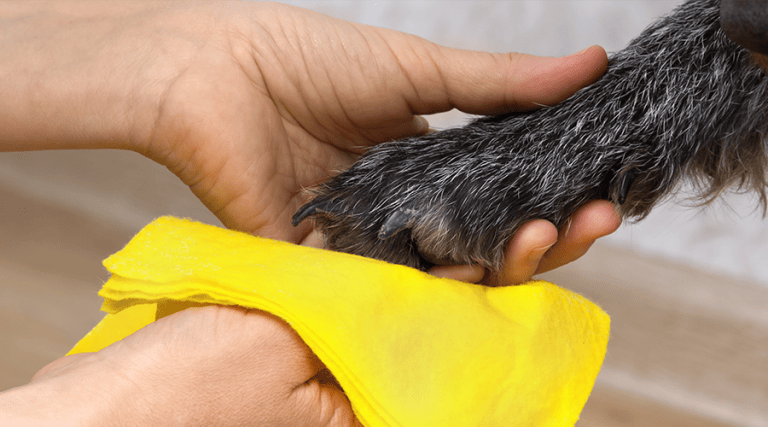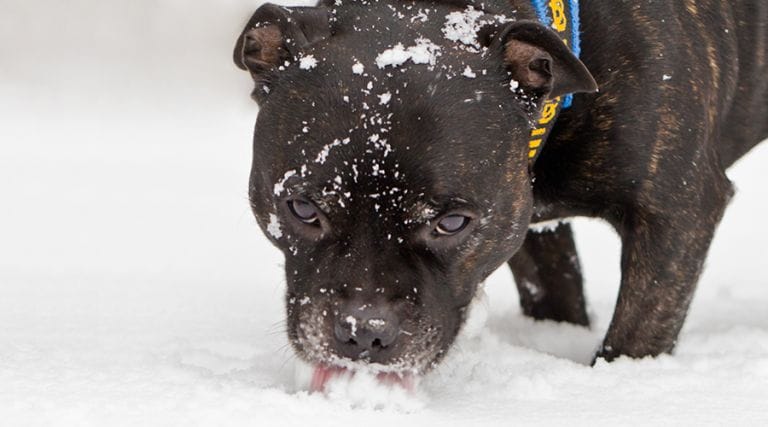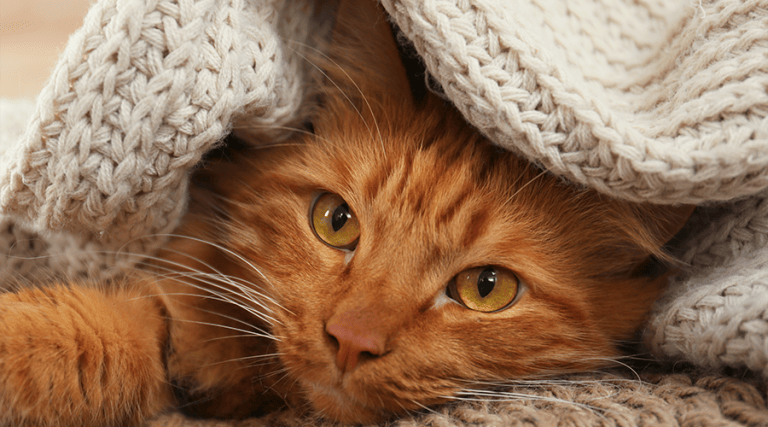Emergency Medicine, Urgent Care
Pet Cold Safety – 10 Tips for Plummeting Temperatures

Across much of the United States, the winter months bring colder temperatures, ice, and snow. Fresh snowfall can be beautiful and even fun for your pet at times. But the cold weather also brings challenges to keeping your pet healthy and safe. Prevention is the best way to protect your pet’s wellbeing and keep them out of the emergency room. Here are 10 pet cold safety tips to protect your pet in the cold.
1. Provide your pet a warm place to sleep away from drafts in your home or the elements outside.
Warm bedding, such as a pet bed or blanket, is helpful. And remember that they are closer to the ground than you are. While you’re comfortable on the couch, they are laying on a floor where there might be drafts that you don’t feel. So, get down on their level to determine a warm spot for them. This becomes even more important if you have a senior pet or one that suffers from arthritis.
2. Never leave your pet unattended with a space heater or fire.
While these are a great way to add warmth to your home, they can be dangerous for pets. Your pet could knock over a heater or chew on a cord, or they can get too close to a fire and burn themselves.
3. Protect their paws when outside.
Your pet’s paws can get irritated from the chemicals used to melt snow and ice. When you get back home, be sure to wipe their paws to remove any remnants of those chemicals that could make your pet sick if they lick their paws.

4. Never leave your pet unattended in a vehicle.
The temperature inside can drop quickly when the car is turned off without the heater running.
5. Putting your pet in a sweater or jacket can help if you have the right kind.
Make sure it’s waterproof. Wet fabric can quickly freeze and be even more dangerous for your pet.
6. Keep your pet hydrated.
Always be sure your pet has access to clean, unfrozen water.
7. Limit snow consumption.
Although in general, eating some clean snow is not a concern, it can upset their stomachs if they eat too much because it’s much colder than what their bodies need. The biggest concern with snow is that it could conceal something that isn’t safe for your pet. Don’t allow your pet to eat snow that has been cleared off roads, sidewalks, or driveways. It may have harmful chemicals or debris that your pet could ingest.

8. Adjust your pet’s food intake.
You may need to adjust food amounts if your pet’s activity levels have decreased. Check the nutrition information on the food labels and adjust amounts as needed.
9. Clean up spills and store chemicals in a safe place.
Antifreeze, ice melt, and other chemicals are extremely poisonous to pets but may be appetizing to them.
10. Keep your pet on a leash or in a securely fenced yard if you head outside.
A wandering pet can quickly lose their way if snow and ice cover up familiar scents and scenes that help them find their way home. It’s always a good idea to ensure your pet has proper identification tags on and have them chipped as well in case they do get out.
How can you tell if your pet is cold?
Generally, if it’s too cold for you, it’s probably too cold for your pet. Many of the signs that your pet is starting to get cold are like your responses to frigid temperatures. They may start shivering, whining, slowing down, or stopping the activity they were participating in. They may also start to whine or begin looking for a place to burrow. If your pet starts to show those signs, get them inside into the warmth right away so that you can protect them from more serious issues that come from prolonged exposure like frostbite or hypothermia.
Frostbite:
Frostbite occurs when a part of your pet’s body freezes. Areas most affected are usually the extremities such as paws, tails, or ears, and it’s especially dangerous when cold temperatures are combined with windy or wet conditions. Watch out for pale, gray, or blue skin, skin that stays cold, shriveled skin, or pain when touched.
If you notice these, get your pet out of the cold and slowly apply warm water to the area. Do not use hot water, hair dryers, heating pads, or electric blankets as those can cause burns.
Hypothermia:
Hypothermia is an extreme drop in your pet’s body temperature from being exposed to cold temperatures for too long causing the body to lose more heat than it generates. Signs of hypothermia include violent shivering, listlessness and lethargy, a weak pulse, muscle stiffness, problems breathing, and lack of appetite. Untreated, it can cause cardiac arrest and lead to death.
If you notice these symptoms, it’s important to warm your pet as soon as possible. Bring them inside into a warm room and get them dried off. Wrap them in warm blankets (you can put blankets in your clothes drier to warm them up). You can also use warm, wrapped water bottles to place near your pet’s abdomen, armpits, or chest before wrapping them in a blanket. Steer clear of heating pads or electric blankets as those can cause burns.

Remember that your pet’s breed, size, and overall health will impact their ability to withstand the cold, so keep a watchful eye on your pet as the temperature drops. Be prepared in advance for emergencies, too, since cold weather storms can lead to power outages. Make sure to include needed pet supplies in your emergency kit like extra food, clean water, and a warm blanket.
Following these pet cold safety tips can help keep your pet out of the ER. If you believe your pet has been overexposed to cold and has signs of frostbite or hypothermia, contact your veterinarian right away, or bring them to your nearest MedVet.